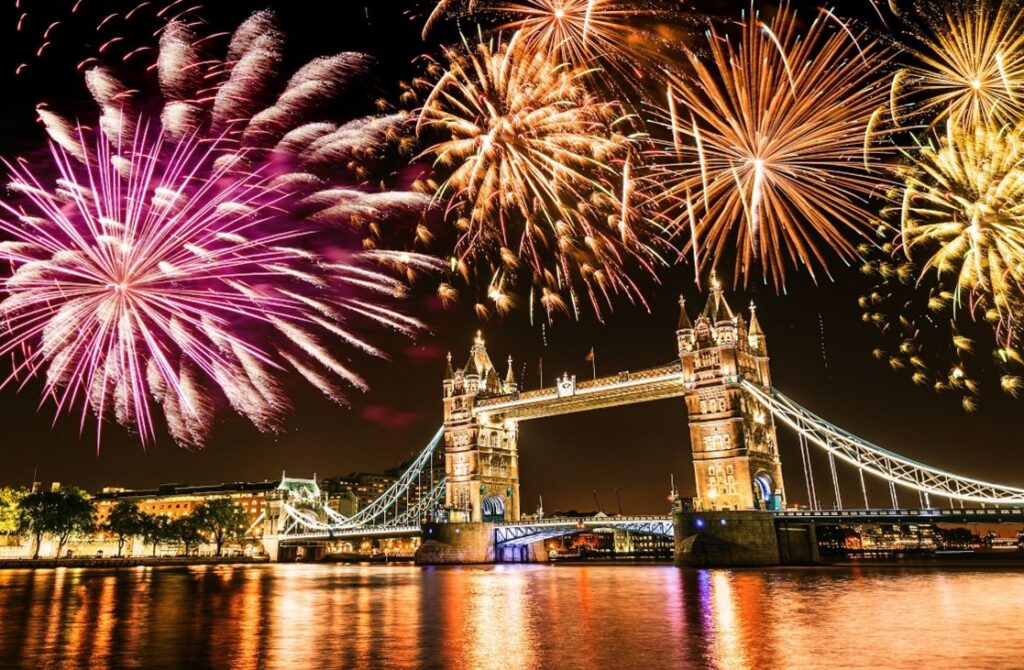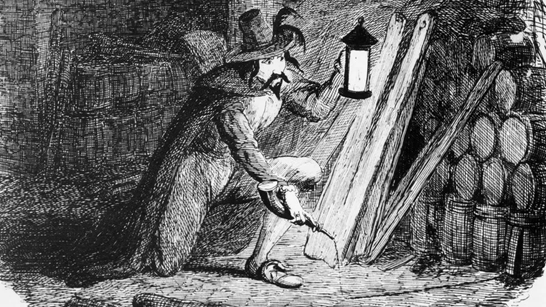By Julianne Sidebottom

A bit of History:
Today, we all know the 5th of November as Bonfire Night, but the roots of this centuries-old tradition are much more than an evening of sparks and illumination… On the night of the 5th of November 1605, 36 barrels of gunpowder were discovered hidden behind a pile of firewood in a storeroom beneath the Palace of Westminster. With them, guards found a man calling himself John Johnson– not the name we’re all familiar with, right? In his pockets they found fuses and swiftly arrested him. After days of torture, he soon confessed to what is commonly refer to as ‘the gunpowder plot’. It was later found out that his real name was Guy (Guido) Fawkes and he, along with his fellow plotters (13 in total), hoped to spark a Catholic uprising by blowing up parliament and everyone in it – including King James I and many of his leading nobles.
You’re probably wondering how the King knew something wasn’t quite right on the night and sent his guards to investigate. An anonymous letter was received by Lord Monteagle, a Catholic sympathiser and former Catholic himself. The author asked Monteagle to burn the letter once he’d read it – but instead he took it straight to King James’s right hand man, the Earl of Salisbury, who decided to inform the king on his return from a hunting party. One of Monteagle’s servants got word to Catesby that the plot had been betrayed, but he convinced his fellow plotters to continue, arguing that the letter was too vague to threaten their plans. Sometime during the early hours of the 5th November, guards commenced another search where Fawkes was found and arrested.
So why did this all come about? In a nutshell, because of religion. England was a Protestant country and the plotters were Catholic. They wanted England to be Catholic again, and thought they could force change if they killed King James I and his ministers.
Fawkes was tortured on the rack before being tried for high treason in January 1606. He was found guilty and sentenced to execution by hanging, drawing, and quartering, but his neck was broken after he jumped or fell to his death from the gallows ladder.

To this day, the Houses of Parliament are still searched by the Yeomen of the Guard just before the State Opening which is normally held in November (since 1928) to ensure no latter-day Fawkes is concealed in the cellars, though this is retained as a picturesque custom rather than a serious anti-terrorist precaution.
Check out the animated video’s below for more information and to hear the full story! You may need the full story to complete the quiz…
Part 1-
Part 2-
Other interesting facts:
It was once illegal to NOT celebrate bonfire night!
Until 1959, it was illegal not to celebrate Bonfire Night in Britain. During this time, there was only one place in the UK that refused to mark the failed attempt. Out of respect for their alumnus, St Peter’s School in York, where Guy Fawkes attended, was excused from burning a photo of its former pupil.
However, during the First and Second World Wars, no one was allowed to set off fireworks or light bonfires. During these times, Bonfire Night was celebrated indoors to protect the people and avoid revealing their location to the enemy.
Fireworks were invented by accident. In the 10th century, a Chinese cook accidentally mixed three common cooking ingredients (sulphur, charcoal and a salt substitute) and set it alight, which resulted in colourful flames.
My favourite type of fireworks are Fountains as they are really pretty and colourful and generally don’t make a loud bang!

Bonfire Night Quiz:
Tip: Most of the answers can be found within the information and video’s above.
- Complete the traditional Bonfire Night rhyme: ‘Remember, remember the fifth of November…’
- What false name was used by Guy Fawkes?
- How many plotters were there in total?
- Who was the leader of the group that planned the Gunpowder Plot?
- What year did the Gunpowder Plot take place?
- Until what year was it illegal to not celebrate bonfire night?
- Where were Fireworks first invented?
- How many barrels of gunpowder were found under Parliament?
- What is the Yorkshire cake traditionally eaten on Bonfire Night called?
- What is Julianne’s favourite firework


For the quiz answers, a delicious parkin recipe and bonfire printables please go to the Resource section of the website 🎆
Thank you for reading, Julianne.
